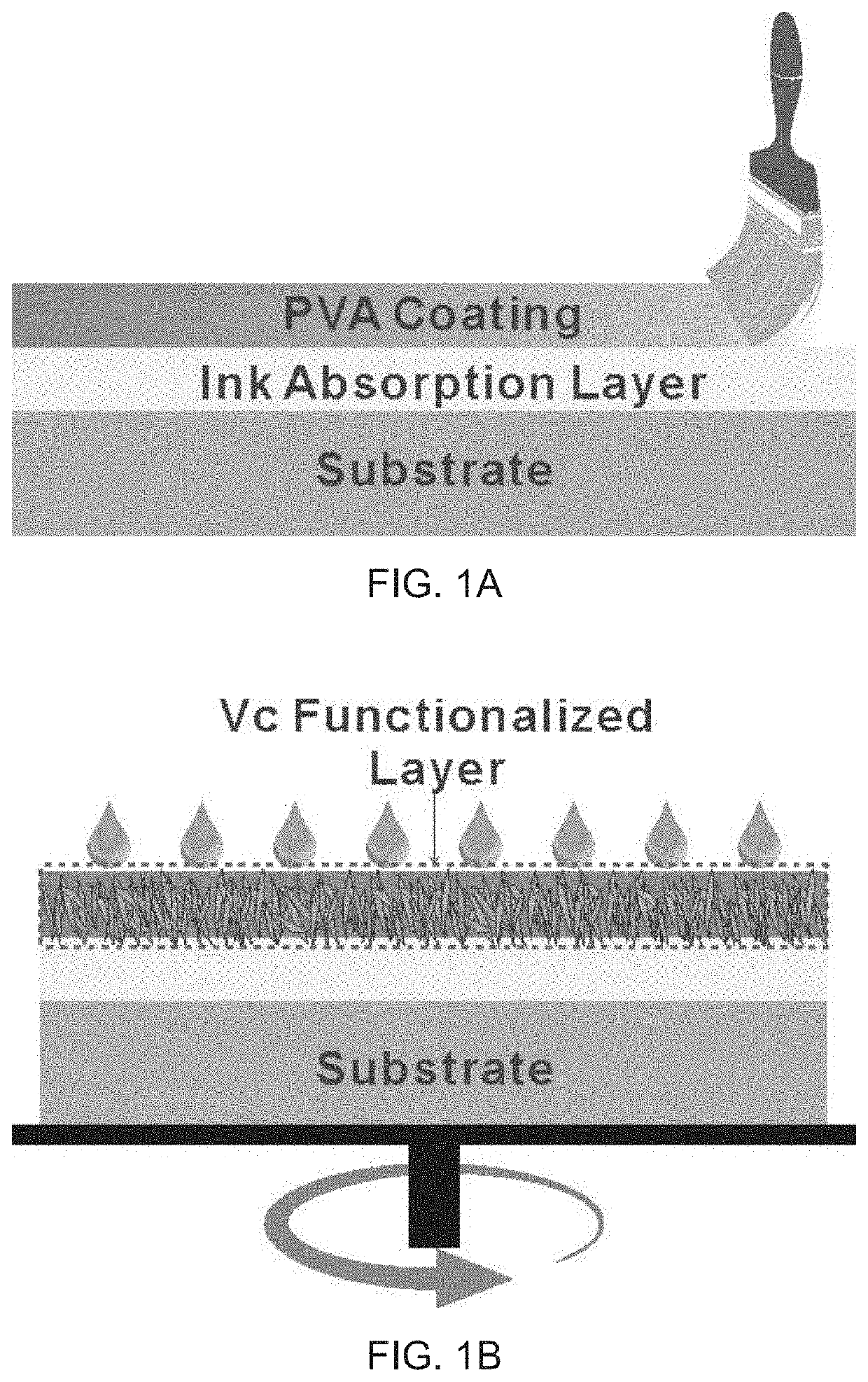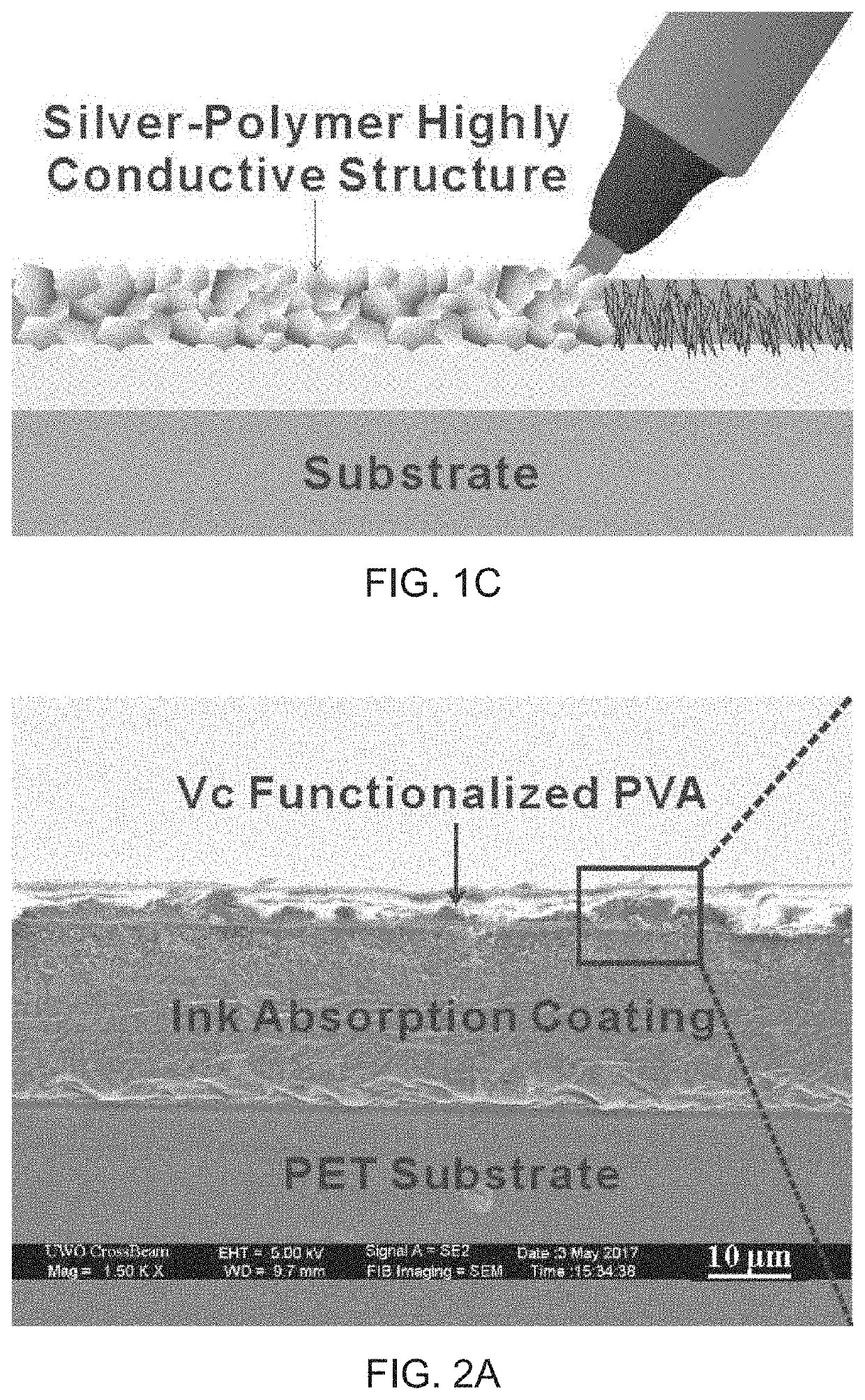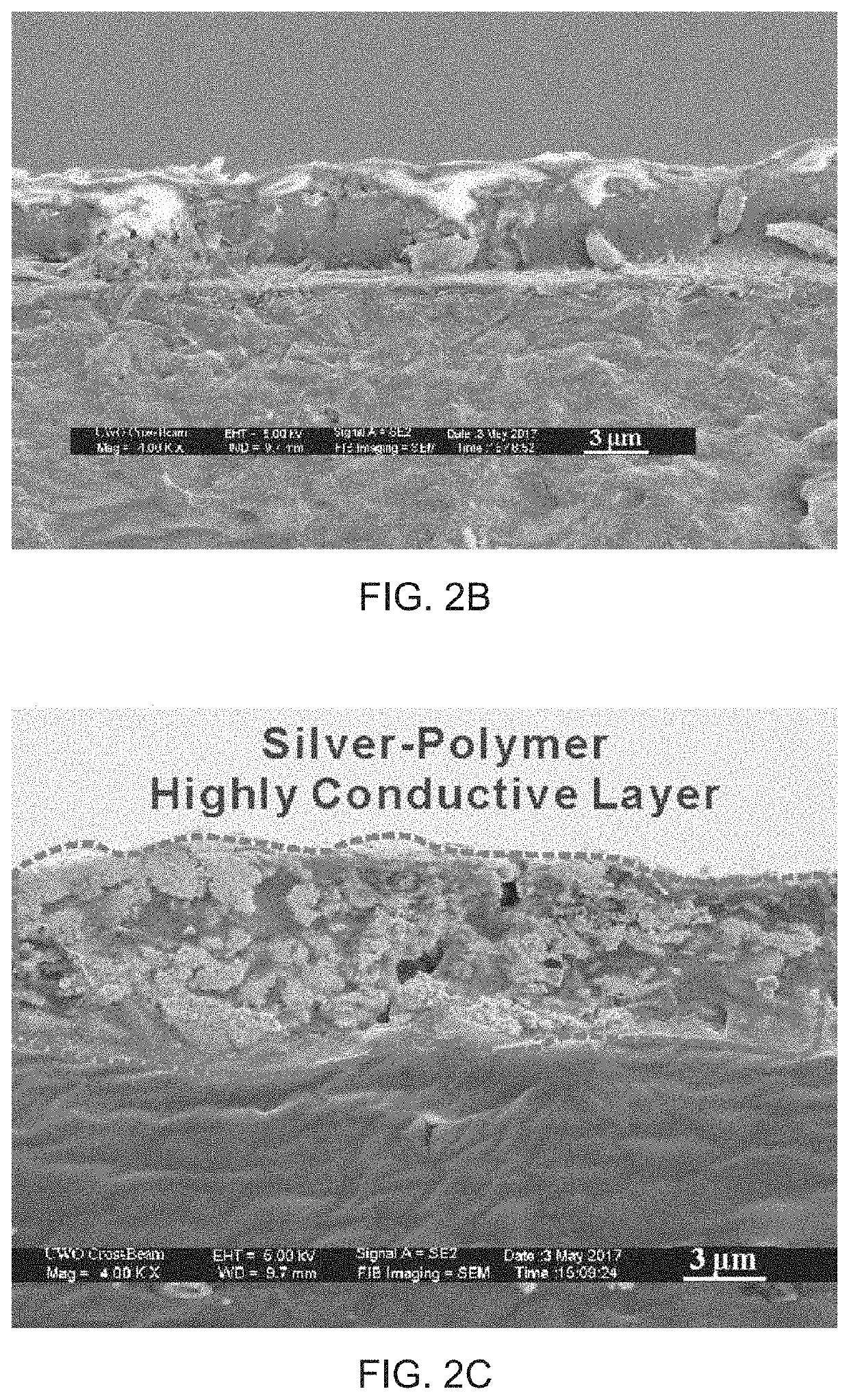React-on-demand (ROD) fabrication method for high performance printed electronics
a technology of printed electronics and reactive on-demand, applied in the field of printed electronics, can solve the problems of erod technology being withdrawn from the end user, high cost, and inaccessible to general users, and achieve the effects of low cost, simple and portable, and ultra-low sheet resistan
- Summary
- Abstract
- Description
- Claims
- Application Information
AI Technical Summary
Benefits of technology
Problems solved by technology
Method used
Image
Examples
example 1
[0081]Poly (vinyl alcohol) (PVA) (5 g) was dissolved in DI water (90 mL) with continuous stirring for 72 hours at 85° C., yielding a clear, transparent solution. Xanthan gum (0.1 g) was dissolved in DI water (100 mL) at 70° C. with continuous stirring for 3 hours. After the solution cooling down to room temperature, excessive amount of ascorbic acid was added into the solution followed by gentle stirring for 1 hours. The solution was then filtered with filter paper to remove undissolved ascorbic acid, and after the filtration, we got a transparent, clear solution. Transparent PET film was cleaned by the mixed solution of 1:1 ethanol and acetone in ultrasonic bath for 10 mins, and was air dried at room temperature. InkAID ink absorption coating was applied onto the substrate by a foam brush. After the sample was completely dried in air (about 3 hours), PVA coating was applied onto the substrate as the second layer using foam brush and dried in air. Saturated ascorbic acid solution wa...
example 2
[0082]Poly (vinyl alcohol) (PVA) (5 g) was dissolved in DI water (90 mL) with continuous stirring for 72 hours at 85° C., yielding a clear, transparent solution. Xanthan gum (0.1 g) was dissolved in DI water (100 mL) at 70° C. with continuous stirring for 3 hours. After the solution cooling down to room temperature, excessive amount of ascorbic acid was added into the solution followed by gentle stirring for 1 hours. The solution was then filtered with filter paper to remove undissolved ascorbic acid, and after the filtration, we got a transparent, clear solution. Transparent PET film was cleaned by the mixed solution of 1:1 ethanol and acetone in ultrasonic bath for 10 mins, and was air dried at room temperature. InkAID ink absorption coating was applied onto the substrate by a foam brush. After the sample was completely dried in air (about 3 hours), PVA coating was applied onto the substrate as the second layer using foam brush and dried in air. Saturated ascorbic acid solution wa...
PUM
| Property | Measurement | Unit |
|---|---|---|
| concentration | aaaaa | aaaaa |
| temperatures | aaaaa | aaaaa |
| thickness | aaaaa | aaaaa |
Abstract
Description
Claims
Application Information
 Login to View More
Login to View More - R&D Engineer
- R&D Manager
- IP Professional
- Industry Leading Data Capabilities
- Powerful AI technology
- Patent DNA Extraction
Browse by: Latest US Patents, China's latest patents, Technical Efficacy Thesaurus, Application Domain, Technology Topic, Popular Technical Reports.
© 2024 PatSnap. All rights reserved.Legal|Privacy policy|Modern Slavery Act Transparency Statement|Sitemap|About US| Contact US: help@patsnap.com










